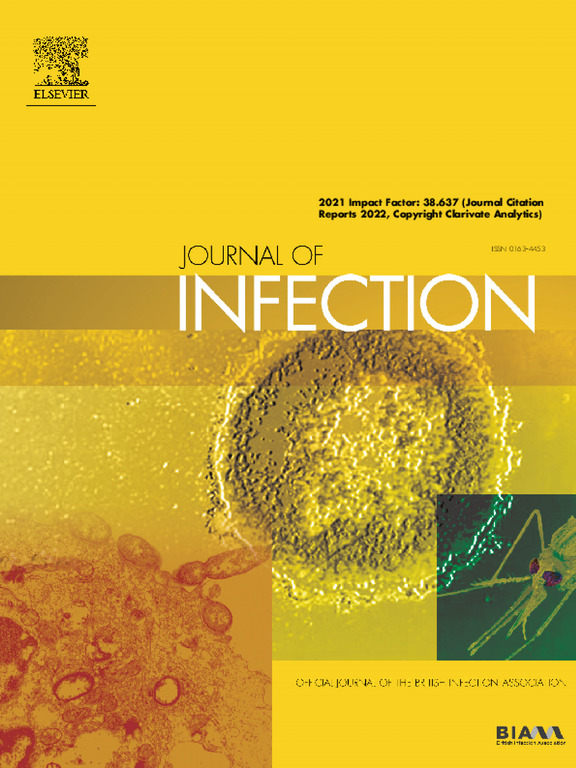在冈比亚低流行地区,无症状学龄儿童和成人对恶性疟原虫疟疾的人类感染库很重要。
IF 14.3
1区 医学
Q1 INFECTIOUS DISEASES
引用次数: 0
摘要
目标:在冈比亚,过去几十年疟疾控制干预措施的扩大导致疟疾负担大幅减少。然而,疟疾传播水平仍然很低。方法:我们在冈比亚东部进行了一项观察性队列研究,以更好地了解有症状和无症状疟疾感染对传染病库的相对贡献。采用分子方法测定寄生虫和配子体携带情况。通过对被动病例检测和社区调查确定的有症状和无症状个体进行蚊膜摄食试验,评估对蚊子的传染性。结果:临床疟疾发病率为1.46次/100人月。社区调查中PCR测定的疟疾感染率为10.5%。在无症状疟疾感染者中,寄生虫总密度与配子体密度呈正相关(β = 0.40;结论:在冈比亚东部,无症状疟疾感染者(主要是成年人、青少年和学龄儿童)仍在传播疟疾,而临床病例对传播的影响相对较小。本文章由计算机程序翻译,如有差异,请以英文原文为准。
Asymptomatic school children and adults are important for the human infectious reservoir for Plasmodium falciparum malaria in an area of low endemicity in The Gambia
Objectives
In The Gambia, the scale-up of malaria control interventions in the past decades resulted in a substantial decrease of the malaria burden. However, low levels of malaria transmission persist.
Methods
We conducted an observational cohort study in eastern Gambia to better understand the relative contribution of symptomatic and asymptomatic malaria infections to the infectious reservoir. Parasite and gametocyte carriage were determined by molecular methods. Infectiousness to mosquitoes was assessed by mosquito membrane feeding assays on a subset of symptomatic and asymptomatic individuals identified by passive case detection and community surveys.
Results
Incidence of clinical malaria was 1.46 episodes/100 person-months. Prevalence of malaria infection as determined by PCR in community surveys was 10.5%. Among asymptomatic malaria-infected individuals, total parasite density was positively associated with gametocyte density (β = 0.40; P < .0001). Mosquito infection rates in membrane feeding experiments were positively associated with gametocyte density (β = 2.81; P < 0.0001). More than 84% of mosquito infections occurred in asymptomatic individuals with patent infections, with the highest contribution from older children (40.3%), and adolescents and adults (45.5%). Clinical malaria cases identified by passive case detection were responsible for only 1% of mosquito infections; if the definition of clinical malaria included infected individuals identified by community surveys with a history of fever in the preceding week, the contribution of clinical cases to mosquito infections increased to 16%.
Conclusions
In eastern Gambia, malaria transmission is maintained by asymptomatic malaria-infected individuals, mostly adults, adolescents and school-age children, while clinical cases are comparatively less important for transmission.
求助全文
通过发布文献求助,成功后即可免费获取论文全文。
去求助
来源期刊

Journal of Infection
医学-传染病学
CiteScore
45.90
自引率
3.20%
发文量
475
审稿时长
16 days
期刊介绍:
The Journal of Infection publishes original papers on all aspects of infection - clinical, microbiological and epidemiological. The Journal seeks to bring together knowledge from all specialties involved in infection research and clinical practice, and present the best work in the ever-changing field of infection.
Each issue brings you Editorials that describe current or controversial topics of interest, high quality Reviews to keep you in touch with the latest developments in specific fields of interest, an Epidemiology section reporting studies in the hospital and the general community, and a lively correspondence section.
 求助内容:
求助内容: 应助结果提醒方式:
应助结果提醒方式:


